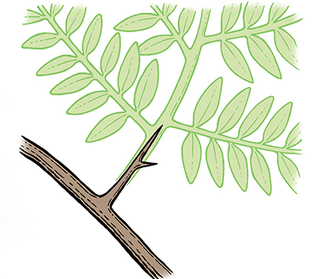 loading
loading
FindingsNoted Gregory NemecView full imageLong intrigued by the thorns on honey locust trees lining New Haven streets, Professor of Ecology and Evolutionary Biology Vivian Irish recently determined how the structures develop. Focusing on a citrus plant (Carrizo citrange), Irish and her team found that two genes that encode regulators of stem cell production are responsible for the thorns. While branches that contain stem cells continue to divide, the products of these genes interrupt stem cell activity, causing a potential new branch to terminate in a long point. Blocking the regulators caused the tree models to produce new branches, but no new thorns. Their findings, Irish notes, could be used to create trees with more fruit-bearing branches. The number of COVID-19 fatalities in the US is likely far higher than what we see in the news. Yale epidemiologist Dan Weinberger and his team compared the number of deaths (from any cause) in March to May with reported COVID-19 deaths. They then looked at the number from the same period in previous years. In 2020, there were nearly 30,000 more deaths—supposedly non-COVID—than would be expected in those months. “Our analyses,” Weinberger says, “suggest that the official tally of deaths due to COVID-19 represents a substantial undercount.” Sixteen- to nineteen-year-old drivers are at highest risk for auto accidents. To parents, a licensing delay of a few years might seem wise. However, Federico E. Vaca, a Yale professor of emergency medicine, and a team of researchers have found that licensing delays cause teens to miss critical safety training. In all states, sixteen-year-olds must participate in Graduated Driver Licensing (GDL), shown to reduce teen auto fatalities. But participation in GDL is not required once someone turns eighteen. Those who have not had GDL do not benefit from skill development in situations such as driving at night or with several passengers.
The comment period has expired.
|
|